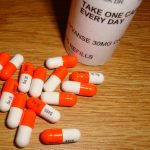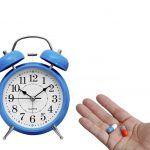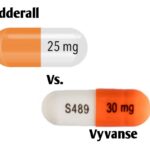What Happens When Vyvanse Dose is Too Low?

Attention-deficit/hyperactivity disorder (ADHD) is one of the most common mental disorders affecting children. ADHD also affects many adults. An estimated 8.4% of children and 2.5% of adults have ADHD. ADHD is often first identified in school-aged children when it leads to disruption in the classroom or problems with schoolwork. It is more common among boys than girls.
There are three different types of ADHD, depending on which types of symptoms are strongest in the individual:
- Predominantly Inattentive Presentation: It is hard for the individual to organize or finish a task, to pay attention to details, or follow instructions or conversations. The person is easily distracted or forgets details of daily routines.
- Predominantly Hyperactive-Impulsive Presentation: The person fidgets and talks a lot. It is hard to sit still for long (e.g., for a meal or while doing homework). Smaller children may run, jump or climb constantly. The individual feels restless and has trouble with impulsivity. Someone who is impulsive may interrupt others a lot, grab things from people, or speak at inappropriate times. It is hard for the person to wait their turn or listen to directions. A person with impulsiveness may have more accidents and injuries than others.
- Combined Presentation: Symptoms of the above two types are equally present in the person.
Because symptoms can change over time, the presentation may change over time as well.
What is Vyvanse?
Vyvanse is a brand of lisdexamfetamine, a stimulant medication that is mainly used to treat attention deficit hyperactivity disorder in people over the age of five as well as moderate-to-severe binge eating disorder in adults. Lisdexamfetamine is taken by mouth.
The history of Vyvanse began shortly after its development by New River Pharmaceuticals. It was a substitute for dextroamphetamine; Vyvanse was intended to be a longer-lasting and less abused version. The FDA approved it on April 23, 2008. On February 19, 2009, Health Canada approved Vyvanse to treat ADHD. In January of 2015, Vyvanse became the first medication approved by the U.S. Food and Drug Administration for the treatment of binge-eating disorder in adults.
How it works
Vyvanse belongs to a class of medications called central nervous system stimulants. It works by altering the balance of chemicals in your brain and increasing norepinephrine and dopamine levels. Norepinephrine is a stimulant, and dopamine is a naturally occurring substance that stimulates feelings of pleasure and reward.
If you have ADHD, you may notice an improvement in your attention span. It can also help control hyperactivity and impulsiveness and improve concentration. It’s also used off-label for treatment-resistant depression and narcolepsy. It may improve depression, fatigue, sleepiness, and wakefulness.
How should this medicine be used?
Vyvanse comes as a capsule and a chewable tablet to be taken by mouth. It is usually taken once a day in the morning with or without food. Take Vyvanse at around the same time every day. The chewable formulation is available in 10, 20, 30, 40, 50, and 60 mg tablets and is intended for oral administration only.
The typical starting dose of Vyvanse for adults and children 6 years of age and older, is 30 mg daily in the morning. The maximum dose is 70 mg. Do not take Vyvanse in the late afternoon or evening because it may cause difficulty falling asleep or staying asleep. Follow the directions on your prescription label carefully, and ask your doctor or pharmacist to explain any part you do not understand. Take Vyvanse exactly as directed. Chewable tablets should be chewed thoroughly before being swallowed.
You may swallow the capsule whole, or you may open the capsule, sprinkle the entire contents into yogurt, a glass of water, or orange juice. Stir to dissolve and swallow the mixture right away. Do not store the mixture for future use, and do not divide the contents of one capsule into more than one dose.
Your doctor will probably start you on a low dose of Vyvanse and increase your dose gradually, not more often than once every week. Your doctor may decrease your dose if you experience unpleasant side effects.
Your doctor may tell you to stop taking Vyvanse from time to time to see if the medication is still needed. Follow these directions carefully.
What happens when Vyvanse dose is too low?
ADHD can be successfully treated pharmacologically and stimulant medications like Vyvanse are considered a first-line treatment. However, 20-35 % of subjects in clinical trials may have an inadequate response to initial stimulant treatment.
Generally, doctors will often start you on a lower dose of Vyvanse and increase it over time if your symptoms don’t improve. This process may be rather quick, or it could take some time. However, if Vyvanse dose is too low, it can fail to appropriately treat ADHD, and the symptoms will persist or get worse.
The purpose of starting Vyvanse at a low dose is to find that perfect balance of the medicine for your body. The goal is for the medication to do its job and produce the desired effects of helping to control your symptoms. At the same time, the doctor wants to reduce or eliminate any adverse effects.
Vyvanse begins to work in about 90 minutes. Peak Vyvanse effects occur in 3 to 4 hours and can last up to 14 hours. Regardless of the Vyvanse dosage, it’s best to take it in the morning with enough time for it to kick in before school or work.
For people who don’t respond to the medication, some doctors recommend taking a break from your medicine when it doesn’t seem to be working. That involves stopping the drug for a month or two, then taking it again. Sometimes this can make it effective again. But you may notice an increase in your ADHD symptoms while you’re not taking medication.
However, the prescription of stimulant medication for children with ADHD has been one of the most controversial issues in child psychiatry. Some sectors have demonized stimulant medication, charging that parents and physicians are being grossly negligent in prescribing such “dangerous” drug.





